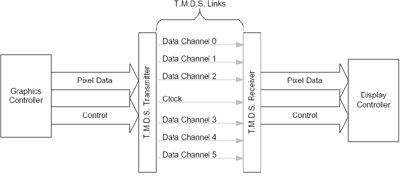Digital Visual Interface (DVI) Explained & Improving GeForce2/3 Image Quality
by Anand Lal Shimpi on January 17, 2002 1:54 AM EST- Posted in
- GPUs
What is DVI?
Other than "that white connector on my video card that I've never used" DVI is a very important standard. Behind the standard is a group of companies that together form the Digital Display Working Group (DDWG), among the key players are Intel and Silicon Image, but we'll address why they are key players later on.
The DDWG came to the realization of the same problem that we just outlined in our introduction where it makes no sense to convert digital data to analog just to eventually convert it back to a digital form. The purpose of the DVI spec was created mainly with the thought that displays would be moving towards the digital domain in the future. The fact that we're still not all running digital flat panels is a very good reason for why we all aren't as familiar with DVI as we should be.
The specification is relatively simple to understand; data is transmitted using what is known as the transition minimized differential signaling (TMDS) protocol. This serial encoding protocol is what is used to transmit data over a DVI connection and it was created by Silicon Image; it shouldn't be a surprise that when it comes to TMDS transmitters, Silicon Image ICs are used much more frequently than any others. The DVI specification calls for at least one TMDS "link" which consists of three data channels (RGB) and one clock control channel.

Two TMDS Links - Taken from The DVI Specification 1.0
According to the DVI specification, a TMDS link may operate at up to 165MHz. A single 10-bit TMDS link offers 1.65Gbps of bandwidth which is enough for a 1920 x 1080 resolution refreshed at 60Hz on a digital flat panel. The maximum resolution depends on the amount of bandwidth required to display the resolution as well as the efficiency of the device it's being sent to. This is beyond the scope of this article but it's worth noting that there are differences between the maximum attainable resolutions on various display technologies.
In order to keep the specification as flexible as possible, a second TMDS link may be used. This link must operate at the same frequency as the primary link, meaning that in order to obtain 2Gbps of bandwidth each link must operate at 100MHz (100MHz x 2 x 10-bits).
It is mainly because of its high-bandwidth abilities that DVI was the standard that emerged victorious among all of the competing solutions.










0 Comments
View All Comments